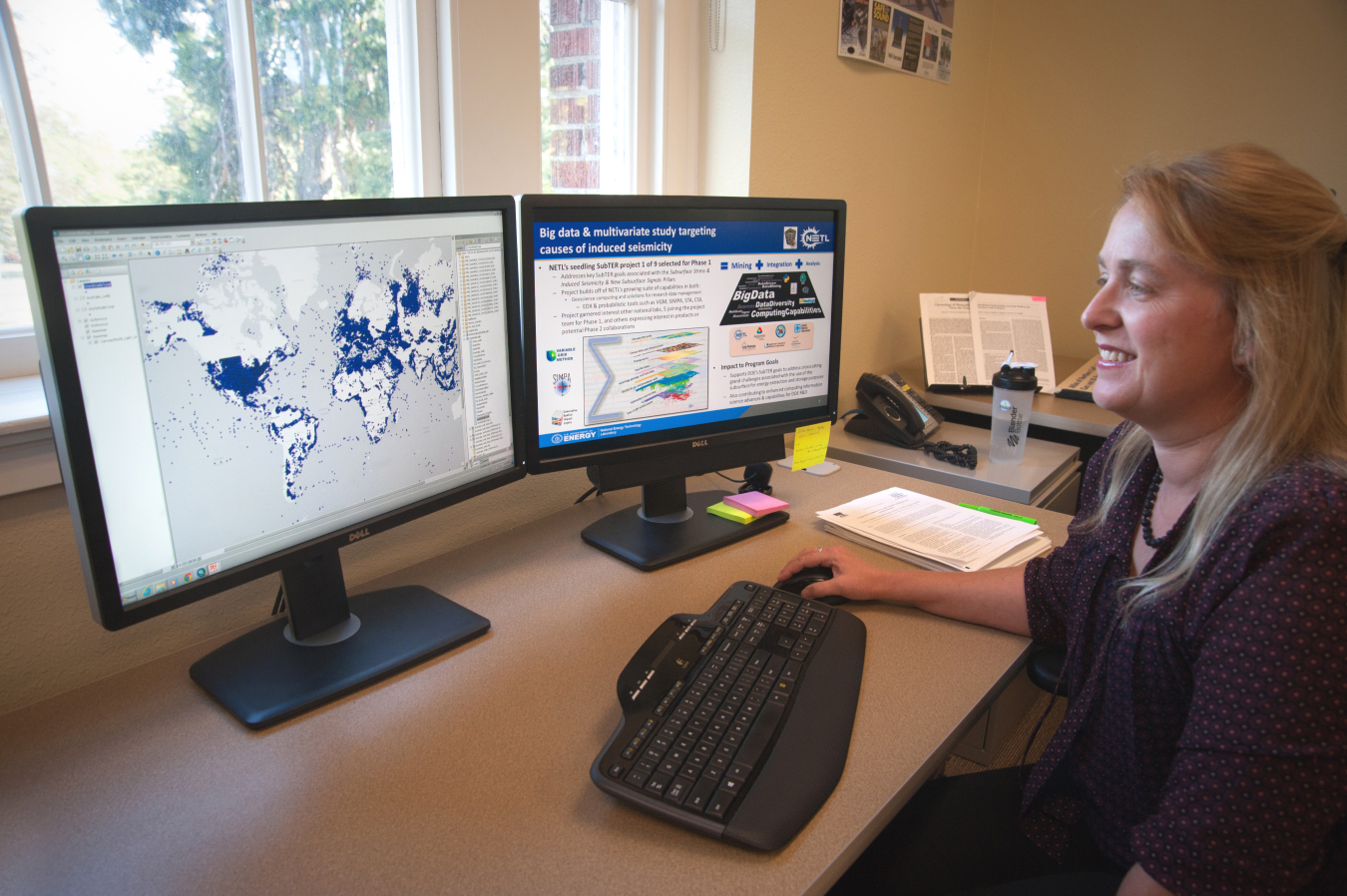Four technologies developed by researchers at the National Energy Technology Laboratory (NETL) have been named finalists for this year’s R&D 100 Awards. The selected technologies reflect the laboratory’s focus on science and technology innovations ...
Office of Fossil Energy and Carbon Management
August 3, 2016
NETL researcher Kelly Rose, co-developer of one of the four NETL technologies chosen as finalists for the 2016 R&D 100 Awards
Four technologies developed by researchers at the National Energy Technology Laboratory (NETL) have been named finalists for this year’s R&D 100 Awards. The selected technologies reflect the laboratory’s focus on science and technology innovations that bolster the nation’s energy security while protecting the environment.
Presented annually by R&D Magazine, the R&D 100 Awards recognize 100 of the brightest and boldest technologies and services of the year across nine categories. Selected by an independent panel of more than 70 judges, past winners include the automated teller machine (1973), the fax machine (1975), halogen lamps (1974), the liquid crystal display (1980), and HDTV (1998). This year’s winners will be announced at the 2016 R&D 100 Conference, to be held November 2–4, 2016, in Washington, DC.
The four NETL technologies listed below are just a few examples of laboratory’s game-changing research, which seeks to discover, integrate, and mature technologies that enhance the nation’s energy security and protect the environment for future generations.
HVAC Load Reduction Technology for Commercial Buildings—Leveraging the laboratory’s proven expertise in sorbent technology development, NETL partnered with enVerid Systems to create unique multi-functional sorbents that can capture carbon dioxide (CO2) and volatile organic compounds at ambient temperatures and which regenerate below 60 degrees Celsius. With these new sorbents, enVerid was able to develop an HVAC load reduction (HLR) technology, which uses a module integrated into existing HVAC systems to scrub the air of dangerous indoor air contaminants. This technology helps to reduce energy use and lower costs by recirculating the already-cooled inside air.
Computationally Optimized Heat Treatment of Metal Alloys—Conventional processes for homogenizing metal alloys are trial-and-error in their approach, resulting in increased process cost and limits to the possible paths that may be explored. NETL’s Computationally Optimized Homogenization Heat Treatment Process provides an easy method to optimize heat treatment to achieve the desired degree of homogenization with a minimum of furnace time.
The primarily application for this technology is for alloys that are exposed to extreme environments, including heat-resistant alloys or those needing corrosion/oxidation resistance. A properly homogenized alloy will not only perform better but will also have an extended lifecycle.
Variable Grid Method for Simultaneously Visualizing Spatial Data Trends and Uncertainty—NETL’s Variable Grid Method (VGM) is a revolutionary approach for the simultaneous visualization and communication of spatial data trends and associated error/uncertainty. The method addresses the need for a user-friendly, flexible, and reliable approach to effectively communicate spatial data, as well as the data’s inherent uncertainties, in a single, unified product.
VGM can be incorporated into existing software packages or used as a post-processing workflow to provide a simple and effective approach to show and understand data trends and to quantify underlying uncertainty. The method, which is relevant to a wide range of end users, can reduce risks, improve decision-making, and reduce costs.
Carbon Capture Simulation Initiative (CCSI) Toolset—The CCSI Toolset is the only suite of computational tools and models specifically tailored to help maximize learning and reduce risk during the scale-up process for carbon-capture technologies. This is critically important because carbon-capture pilot projects represent an expensive, limited opportunity to collect the data necessary to move to commercial scale. Each module in the toolset is specifically tailored to properly guide experimental and pilot-scale testing to acquire important data.
By maximizing the learning during such pilot projects, the CCSI Toolset can help reduce the timeline for subsequent commercialization and enable greater investment confidence. Companies using the CCSI Toolset can ensure more effective scale-up, and government funding agencies can have greater confidence in the success of expensive, large-scale projects.

